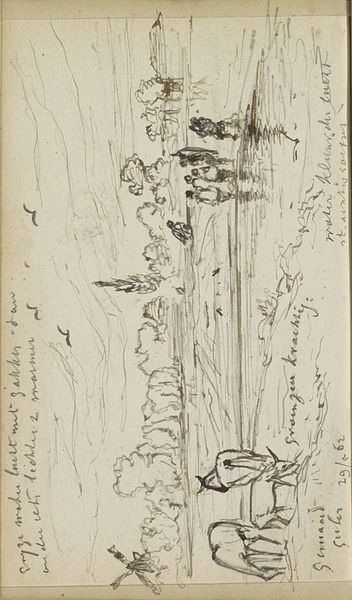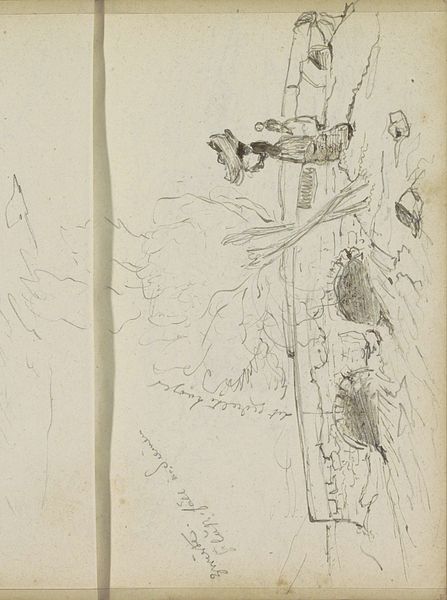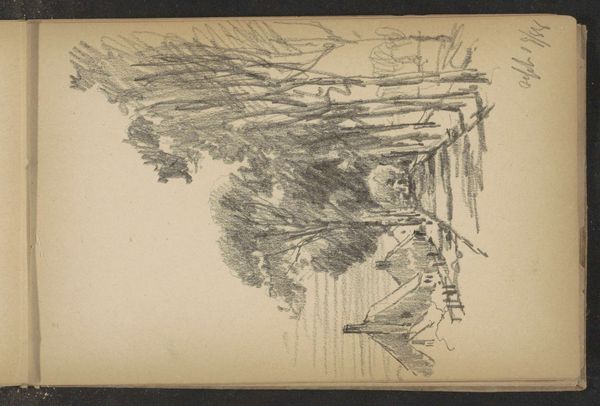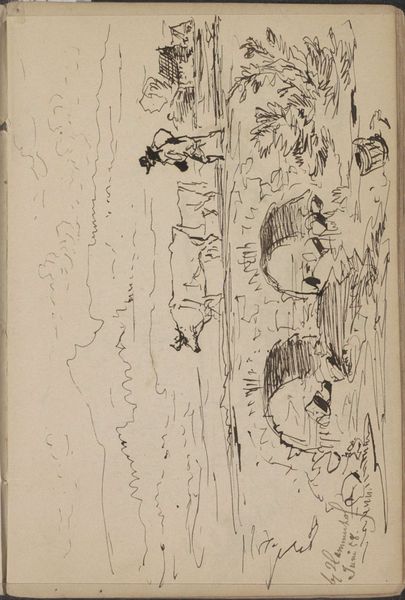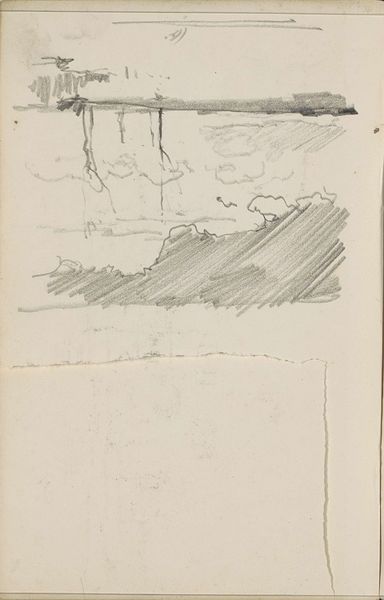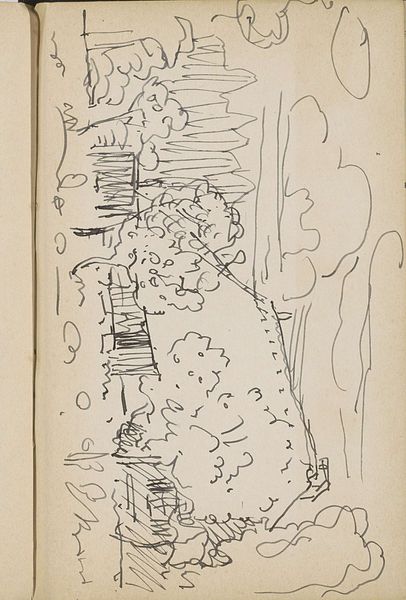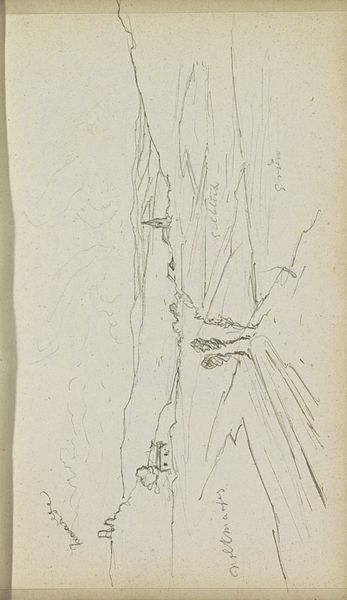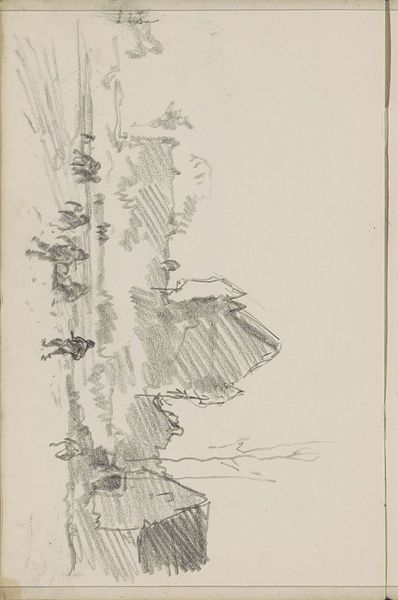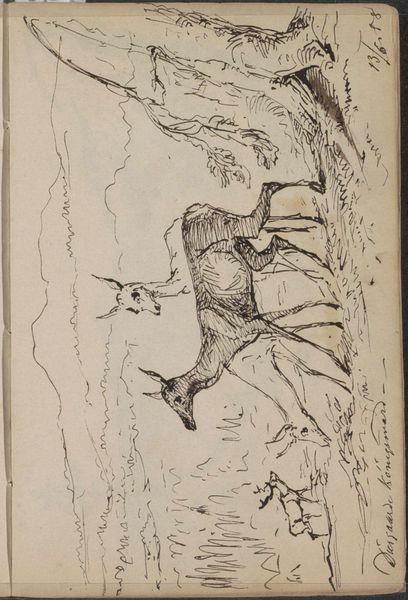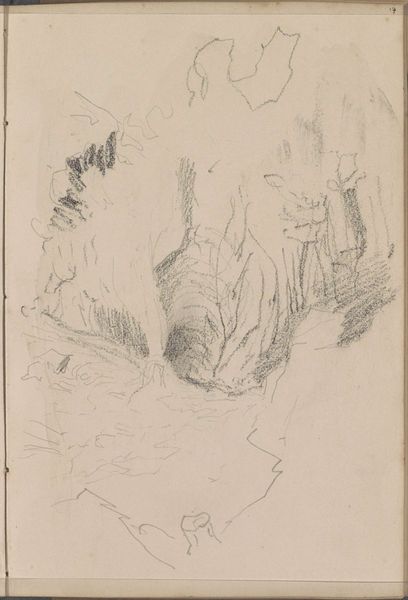
drawing, ink, pen
#
drawing
#
pen sketch
#
landscape
#
river
#
ink
#
line
#
pen
#
realism
Copyright: Rijks Museum: Open Domain
Editor: So, here we have "Bomen langs een rivier," or "Trees Along a River," a pen and ink drawing by Johannes Tavenraat, created sometime between 1862 and 1866. It's at the Rijksmuseum now. I’m struck by its sketch-like quality, like a fleeting moment captured. What do you see in this piece, considering its historical context? Curator: I see more than just a landscape; I see a commentary on humanity's relationship with nature during a time of rapid industrialization. The mid-19th century was a period of intense upheaval, with industrial growth altering landscapes and displacing communities. Notice how the artist uses delicate lines, almost as if hesitant to impose too much upon the scene. Where do you think Tavenraat is positioning himself in relation to these themes? Editor: That's interesting, I hadn't thought about industrialization playing a role. Perhaps Tavenraat is showing a longing for the natural world, threatened by progress. But does the artwork directly express this critique, or is it more subtle? Curator: The critique lies in the act of choosing this subject at all, in imbuing it with an almost wistful tone. It encourages us to question: Who benefits from industrial advancement, and at what cost to the environment and traditional ways of life? The muted tones further enhance the sense of something already fading away. How does the idea of "realism" connect with these themes in your opinion? Editor: I guess I saw the "realism" tag as a style choice to illustrate how nature *looked*. But it's also a representation of nature under threat? I hadn't really considered it going hand-in-hand with all that. Curator: Exactly. The piece invites a reflection on environmental responsibility. By subtly contrasting the permanence of art with the transience of nature affected by industrialisation, we might consider the ethical dimensions of landscape art, inviting viewers to reconsider their positionality in society. Editor: This gives me a new perspective on what I thought was simply a nature scene. It's incredible how much context can shape our understanding! Curator: Indeed. Art often functions as a mirror, reflecting not only the world around us, but also our own values and assumptions within that world.
Comments
No comments
Be the first to comment and join the conversation on the ultimate creative platform.
